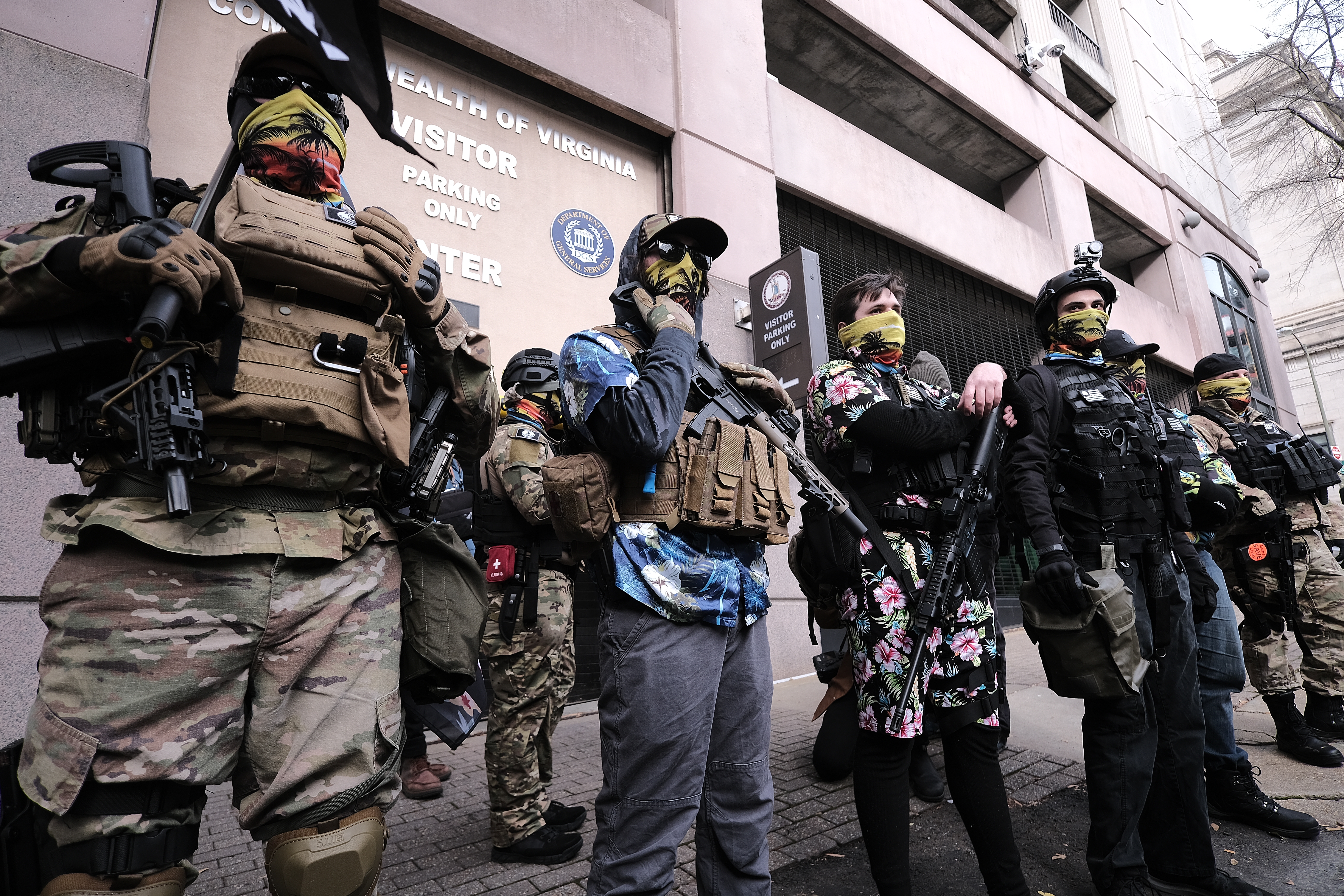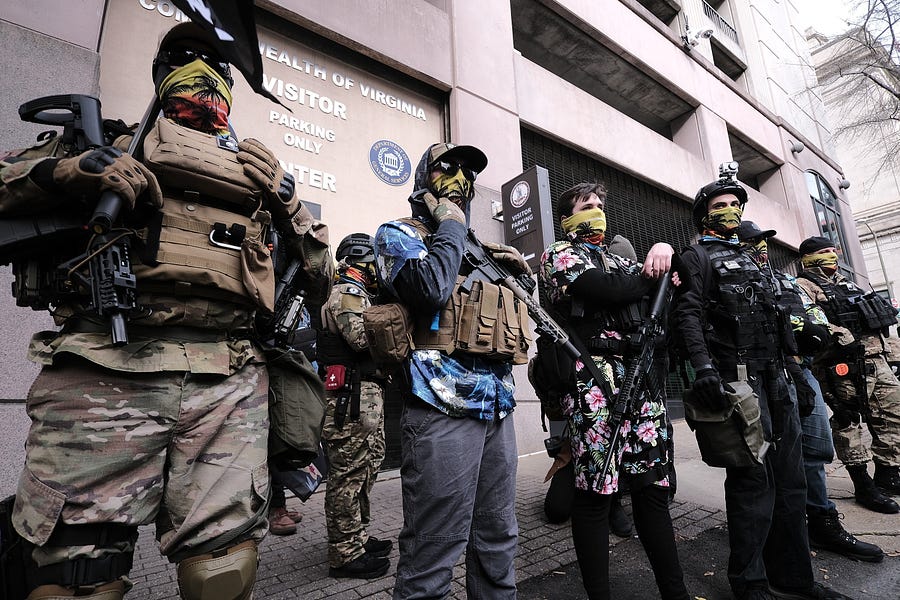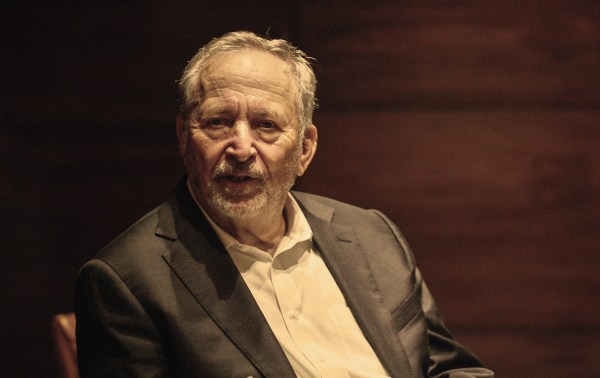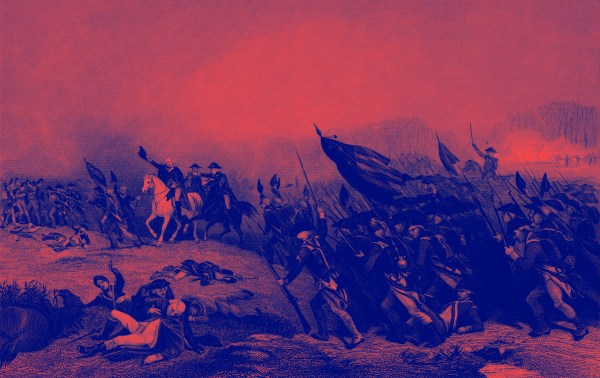Editors Note: We hope you enjoy this unlocked version of David’s Thursday French Press. We’re sending it today as a reminder that a Dispatch membership includes midweek editions of French Press and Jonah Goldberg’s G-File newsletter along with Capitolism, which focuses on all things economics, and Vital Interests, our national security newsletter. Members also have access to Dispatch Live, our semi-regular virtual gatherings with Dispatch writers and special guests, and community commenting features on the site.
Try a Dispatch membership today, RISK FREE. Select the annual option through the link below and take next 30 days to decide if a membership is right for you. You can cancel anytime but if you do stick around, you’ll get 13 months of membership for the price of 12.
Enjoy!

Here’s a quick pop quiz: Please describe the current extent of the Second Amendment right to “keep and bear arms” as defined by the Supreme Court of the United States. The answer is simple and profoundly limited. The combination of two cases—District of Columbia v. Heller and McDonald v. City of Chicago—means that Americans possess an individual right to keep and carry an operable handgun in their homes for self-defense. That individual right is protected against infringement by governments at all levels—federal, state, and local.
And that’s it. That’s the right. So far. The Supreme Court has not opined on a host of relevant firearms restrictions. There are no decisions about assault weapons bans or bans on high-capacity magazines. There are no decisions on the right to carry a weapon outside the home. Thus, the vast, vast majority of gun regulations in your state exist outside of Supreme Court oversight (so far) and are matters of state law or lower-court rulings.
That’s not to say that SCOTUS has been entirely silent on these matters. In the Heller decision, for example, Justice Scalia (writing for the majority) indicated that a wide variety of common gun control regulations would pass constitutional muster:
[Nothing] in our opinion should be taken to cast doubt on longstanding prohibitions on the possession of firearms by felons and the mentally ill, or laws forbidding the carrying of firearms in sensitive places such as schools and government buildings, or laws imposing conditions and qualifications on the commercial sale of arms.
At the same time, the opinion was highly ambiguous in describing the kinds of guns the Second Amendment would protect:
We also recognize another important limitation on the right to keep and carry arms. Miller said, as we have explained, that the sorts of weapons protected were those “in common use at the time.” We think that limitation is fairly supported by the historical tradition of prohibiting the carrying of “dangerous and unusual weapons.” (Citations omitted.)
This is dicta, a nonbinding judicial statement (not part of the core holding), but it’s considered persuasive authority nonetheless. The problem, of course, is that Scalia’s statements are reasonably precise on the elements of gun control that aren’t truly contentious (possession by felons and the mentally ill, for example) but vague or silent on the disputes that truly matter, including the precise types of weapons that are “dangerous and unusual” or on the limits of the ability “bear” a weapon outside the home.
Of course no single case can or should outline the full extent of a constitutional right. It’s also common for the Supreme Court to sit back and let case law “mature” in the lower courts before it takes the next relevant case. But it’s been almost 12 years since the court’s last meaningful Second Amendment opinion, the lower courts have issued decisions that are all over the map, and the gun control argument has only escalated in intensity. The law has matured. The issue has matured. In the face of a wave of state and federal gun control proposals, gun rights activists are almost shouting at the 6-3 GOP-nominated court, “Take a Second Amendment case! Now!”
They may get their wish as early as tomorrow. The court is considering whether to grant a hearing in a case called New York State Rifle and Pistol Association v. Corlett. The case deals squarely with an issue left unresolved in Heller: Do you have a constitutional right to carry a firearm outside the home? In other words, what does the right to “bear” arms truly mean?
The question presented is simple: “Whether the Second Amendment allows the government to prohibit ordinary law-abiding citizens from carrying handguns outside the home for self defense.” There is an open and obvious circuit split on this issue (federal courts of appeal have answered it differently), and the issue is of vital importance.
In fact, it became even more important this week. In a ruling that sent shock waves through the gun rights community, the Ninth Circuit ruled, en banc, that the Second Amendment did not grant a right of open carry outside the home. This ruling followed a 2016 case ruling that “individuals do not have a Second Amendment right to carry concealed weapons in public.”
No right to open carry and no right to concealed carry means no right to carry at all. Writing in dissent, Judge Diarmuid O’Scannlain described the stakes well:
Today, a majority of our court has decided that the Second Amendment does not mean what it says. Instead, the majority holds that while the Second Amendment may guarantee the right to keep a firearm for self-defense within one’s home, it provides no right whatsoever to bear—i.e., to carry—that same firearm for self defense in any other place.
This holding is as unprecedented as it is extreme. While our sister circuits have grappled with—and disagreed over—the question of whether public firearms carry falls within the inner “core” of the Second Amendment, we now become the first and only court of appeals to hold that public carry falls entirely outside the scope of the Amendment’s protections.
The Supreme Court has ducked Second Amendment cases before. It may duck them again. It can’t duck them forever. In fact, I’d be surprised if the court doesn’t hear at least one case in the next term.
There’s just one problem—for gun rights advocates, the timing just might be terrible. One of the key narratives that has empowered the gun rights movement for almost three decades shifted, tragically, in 2020. That narrative was simple (and also the title of an influential book), “More guns, less crime.” At the same time that American violent crime rates were dropping, sharply, millions more guns were also entering circulation. In other words, while America’s crime rates were still too high, the available evidence indicated that you could effectively fight crime while also increasing protection for Second Amendment rights. More guns did not necessarily mean more crime, and in fact there is strong evidence that armed self defense can and does save lives.
But in 2020 (and in the first few months of 2021), the narrative shifted, sharply. Not only was 2020 one of the most violent years in decades, the Supreme Court will consider the New York State Rifle and Pistol Association’s cert petition within days of two terrible mass shootings, one in Georgia and the other in Colorado. Also, this violence and these shootings occurred in the aftermath of a wave of violent and intimidating protests in the United States—including the use of open-carry to intimidate public officials at work and at home.
Why mention this reality? After all, none of this changes the text of the Second Amendment. None of this changes its original public meaning. I raise it because of a singular reality that my Advisory Opinions co-host Sarah Isgur and I talk about all the time. Judges are human beings. It’s simply wrong to think of them as detached and disinterested, unswayed by the conditions of the world around them. Hundreds of years of history and experience teach us otherwise.
Will justices be as hospitable to open carry if open carry is increasingly used to intimidate public officials in the exercise of their lawful duties? Will justices reject large-capacity magazine restrictions or assault weapons bans if assault weapons and large-capacity magazines are increasingly used to kill large numbers of innocent people in the minutes before police can arrive?
(Note this can cut both ways—will justices permit carry restrictions or magazine limitations when people feel increasingly vulnerable to crime? Or when they know that the burden of restrictions would mainly fall on the law-abiding?)
I have long argued that American gun rights depend greatly not just on the text and original meaning of the Constitution, but also on the present conditions in American streets and schools. Mass shootings are the single greatest threat to the right to own semi-automatic rifles like the AR-15. Angry protesters intentionally and obviously using open carry to terrify and intimidate is the single greatest threat to public carry laws.
This raises an important larger point. The long-term defense of liberty has always depended not just on legal and political arguments, but also on the responsible exercise of the liberty you seek to defend. The greater the abuse of that liberty, the greater the public pressure grows to limit its use.
Make no mistake: The law-abiding gun rights community has a good story to tell. Concealed carry permit holders have saved lives. They’ve stopped mass shootings. They’re remarkably peaceful. But that’s not the only story, and the more our civil society frays, the greater the challenge of the gun rights litigant becomes to win the hearts and minds of the justices of the Supreme Court.
One more thing …
I did it again. I made parts of the right Very Mad with a tweet. Here it is:
On occasion I tweet things that I’ve been thinking for a while, just to stir up some conversation. And, well, a “conversation” ensued. Ben Shapiro weighed in, Sebastian Gorka called me a “cuck,” and the vitriol flowed. But in spite of many eloquent insults, I’m still not persuaded that diversity training itself has much of an impact on our lives (certainly not compared to actual workplace discrimination of all stripes), and just so you know, I’ve got some data on my side:
Do people who undergo training usually shed their biases? Researchers have been examining that question since before World War II, in nearly a thousand studies. It turns out that while people are easily taught to respond correctly to a questionnaire about bias, they soon forget the right answers. The positive effects of diversity training rarely last beyond a day or two, and a number of studies suggest that it can activate bias or spark a backlash. Nonetheless, nearly half of midsize companies use it, as do nearly all the Fortune 500.
I’d love to hear your thoughts. What do you think about diversity training? Is it mainly a boring and pointless exercise (my experience), or does it truly alter our nation’s culture in any meaningful way?
And another thing …
Today’s been a busy podcast day. Advisory Opinions was jam-packed with legal nerd goodness, and I subbed for Jonah on the Remnant. I hosted my good friend, FIRE President Greg Lukianoff, and we talked about free speech, cancel culture, and the awesome powers of The Flash. You can listen to the two podcasts below:


One last thing …
I’m sorry. We’ve gone more than halfway through the NBA season, and I’ve shared hardly any Ja Morant highlights. That’s inexcusable. So I’ll (partially) make it up with this video of the NBA dunk of the year.
Oh, and let’s not forget the two-year anniversary of this nastiness in March Madness. Can your point guard do this?







Please note that we at The Dispatch hold ourselves, our work, and our commenters to a higher standard than other places on the internet. We welcome comments that foster genuine debate or discussion—including comments critical of us or our work—but responses that include ad hominem attacks on fellow Dispatch members or are intended to stoke fear and anger may be moderated.
With your membership, you only have the ability to comment on The Morning Dispatch articles. Consider upgrading to join the conversation everywhere.